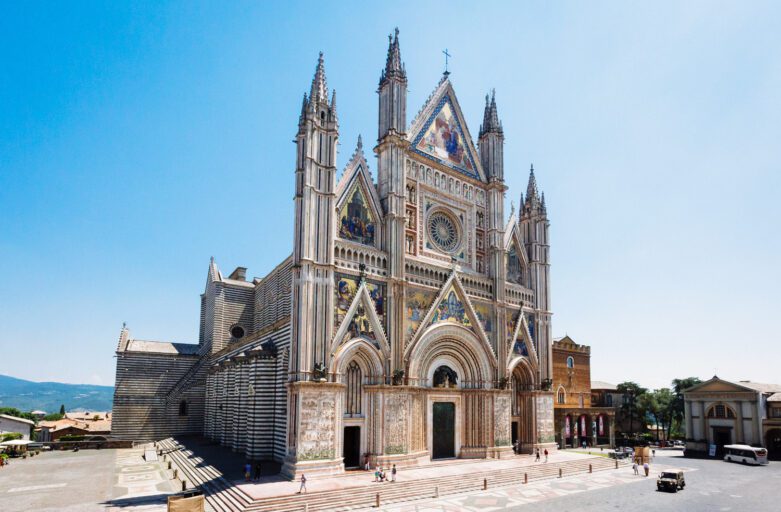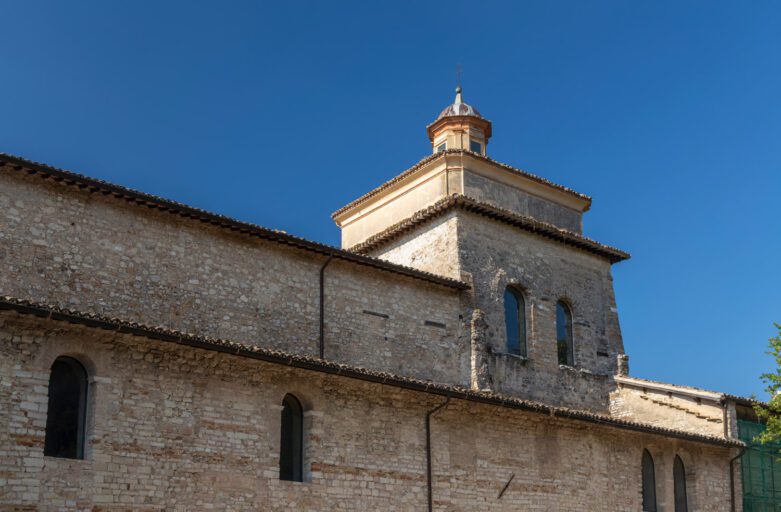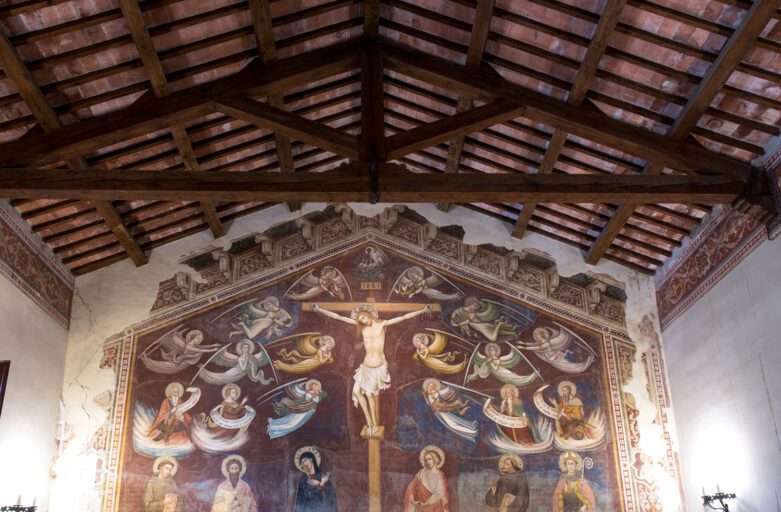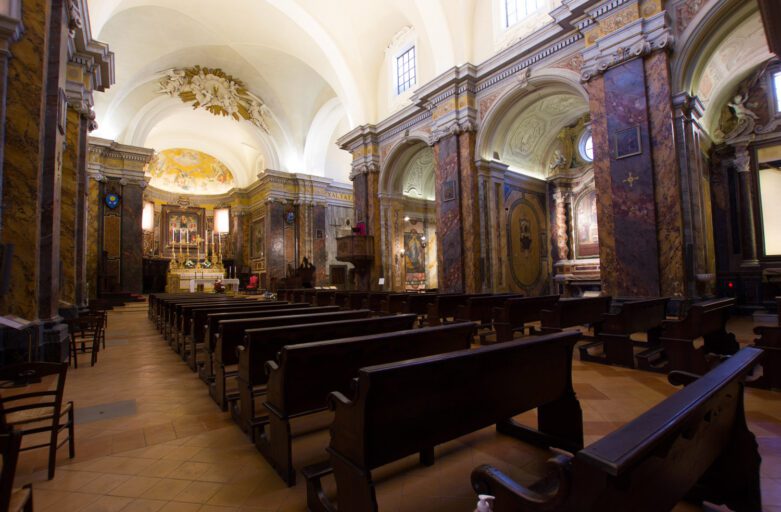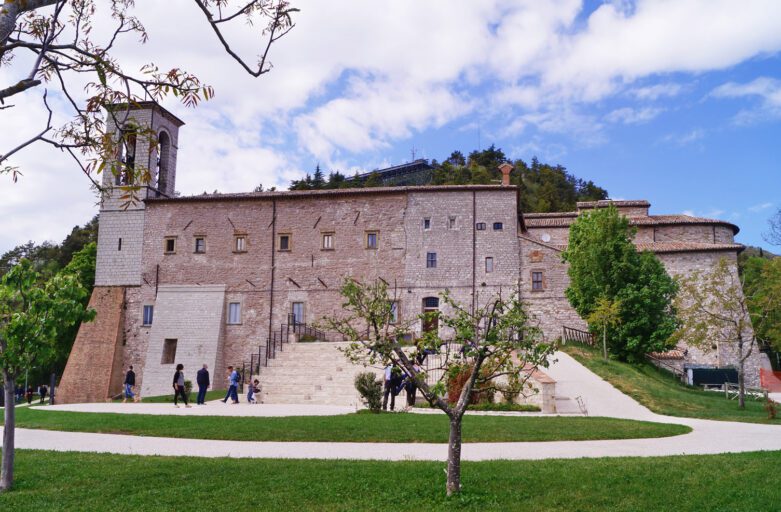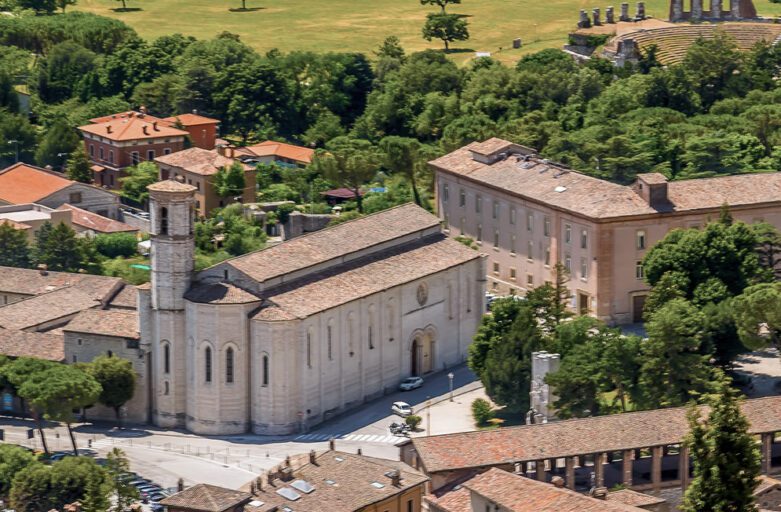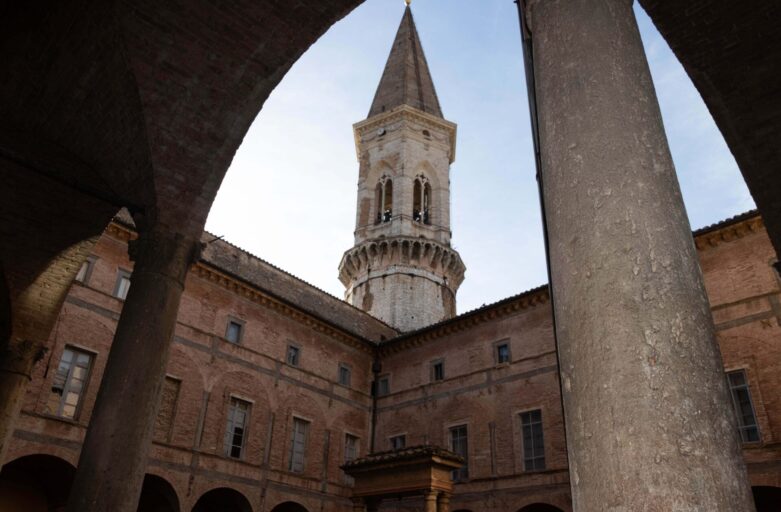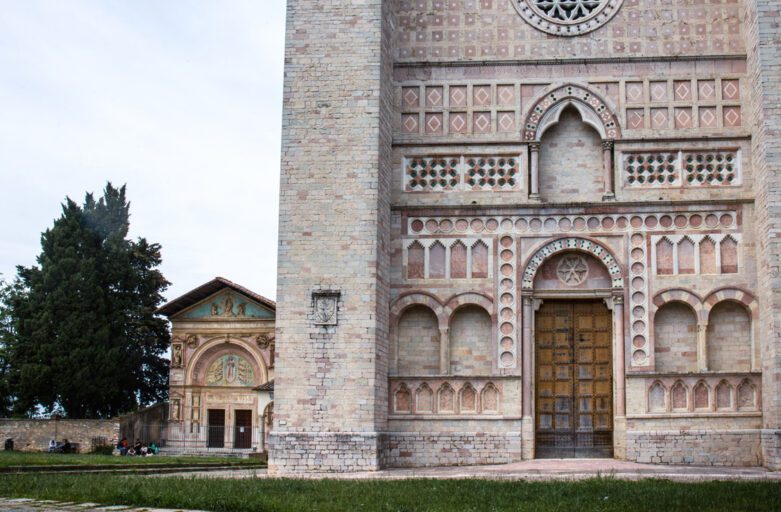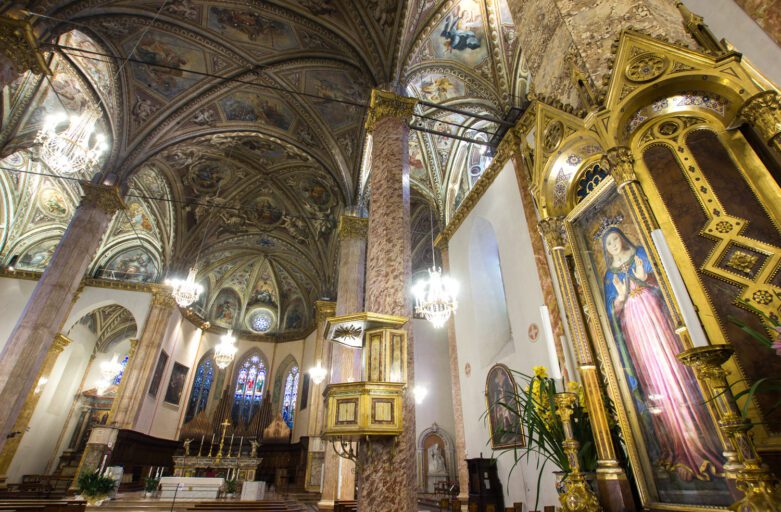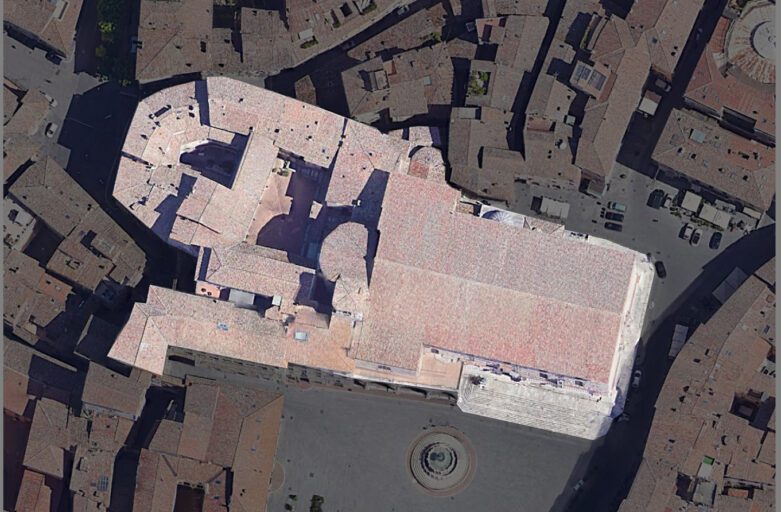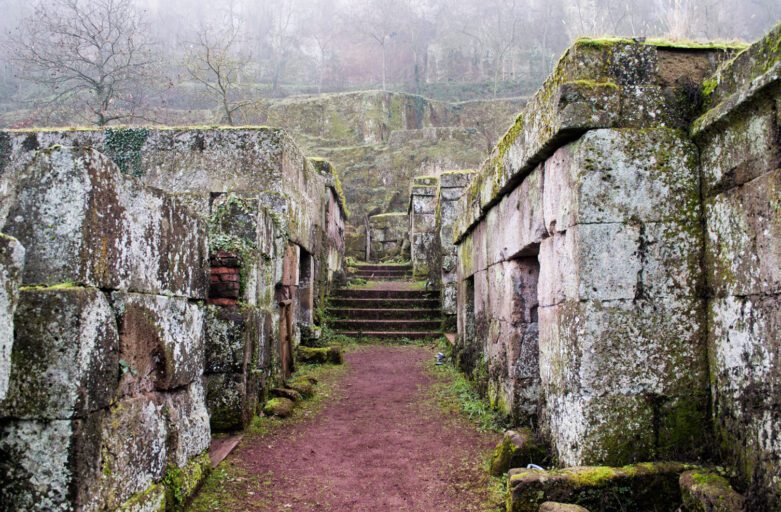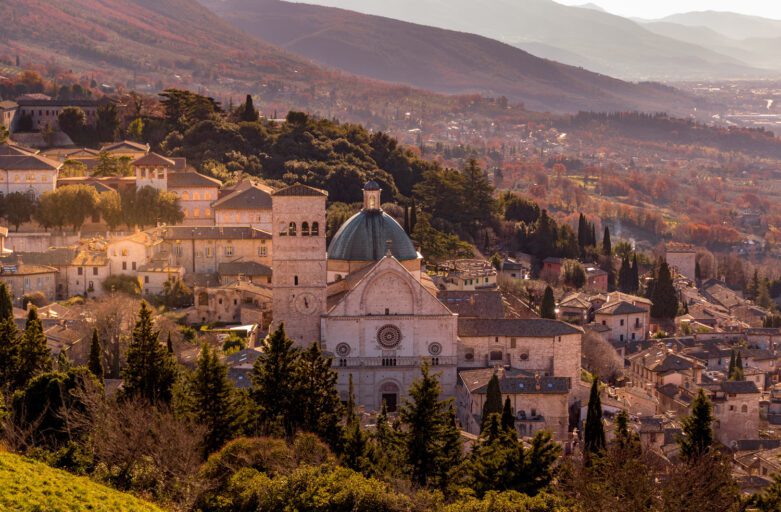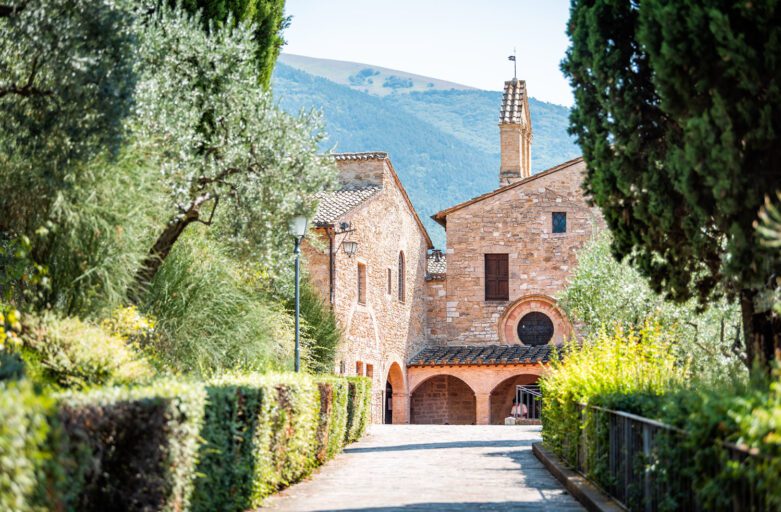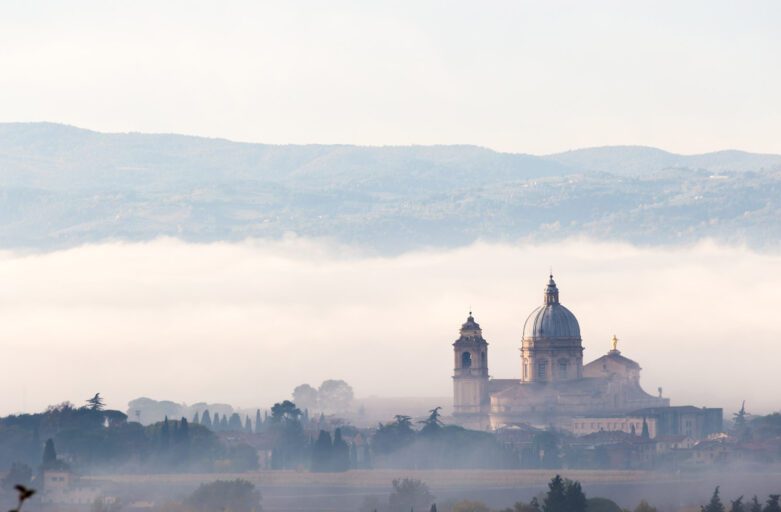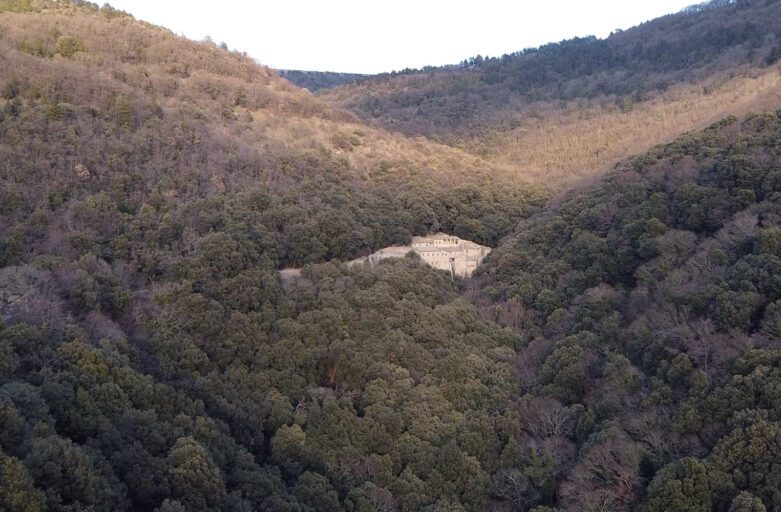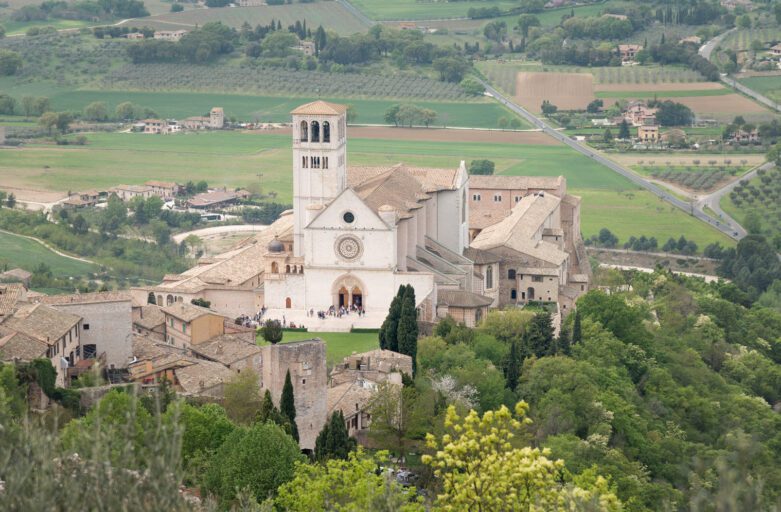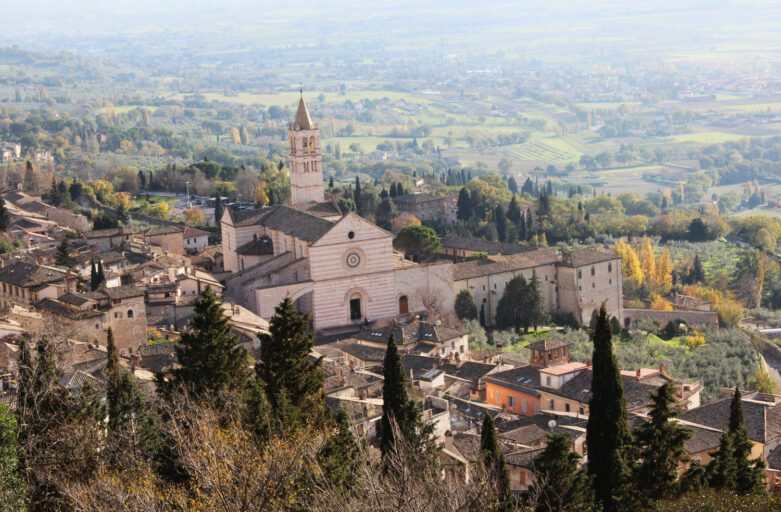From Grotto to Shrine
The architectural complex called “Hermitage of Carceri” started and developed around a grotto in which Saint Francis of Assisi used to retreat in order to pray. The Hermitage of Carceri is a place of memory, kept alive by the Franciscan friars who still live there; and a place of witness, as well, permeated with spirituality. Here preserved is not only the very place where Francis talked with God, but also the way in which the little poor friar kept in contact with the Lord while closely in touch with Nature. Francis in fact immersed himself in the contemplation of all created things, which according to him were a sign of God’s love – to the extent of calling even the smallest natural beauty his “sister,” as his biographer, Saint Bonaventure, says: “While considering that all things share a common origin, he felt all the more full of compassion, and called all creatures, however small, by the name of brother or sister” (Legenda Maior, VIII.6). In a thick wood at the feet of Mount Subasio, some 2,400 feet on sea level, during Francis’ time there were natural grottoes and just a very small church called Saint Mary of Carceri. The warm color of the stones, the material in which the church and later the whole shrine was built, is in perfect harmony with the green of Nature all about, and makes this site, embedded in Umbrian woods, a really unique place.
